- News
- Reviews
- Bikes
- Components
- Bar tape & grips
- Bottom brackets
- Brake & gear cables
- Brake & STI levers
- Brake pads & spares
- Brakes
- Cassettes & freewheels
- Chains
- Chainsets & chainrings
- Derailleurs - front
- Derailleurs - rear
- Forks
- Gear levers & shifters
- Groupsets
- Handlebars & extensions
- Headsets
- Hubs
- Inner tubes
- Pedals
- Quick releases & skewers
- Saddles
- Seatposts
- Stems
- Wheels
- Tyres
- Tubeless valves
- Accessories
- Accessories - misc
- Computer mounts
- Bags
- Bar ends
- Bike bags & cases
- Bottle cages
- Bottles
- Cameras
- Car racks
- Child seats
- Computers
- Glasses
- GPS units
- Helmets
- Lights - front
- Lights - rear
- Lights - sets
- Locks
- Mirrors
- Mudguards
- Racks
- Pumps & CO2 inflators
- Puncture kits
- Reflectives
- Smart watches
- Stands and racks
- Trailers
- Clothing
- Health, fitness and nutrition
- Tools and workshop
- Miscellaneous
- Buyers Guides
- Features
- Forum
- Recommends
- Podcast
news
“Hey Sainsbury’s, what kind of hell is this?” Cyclist slams supermarket’s “impossible” new cycle parking; Lime bikes ban backlash; Wiggins back on his bike for first time in 3 years; Council throws party for unfinished cycle lane + more on the live blog
SUMMARY
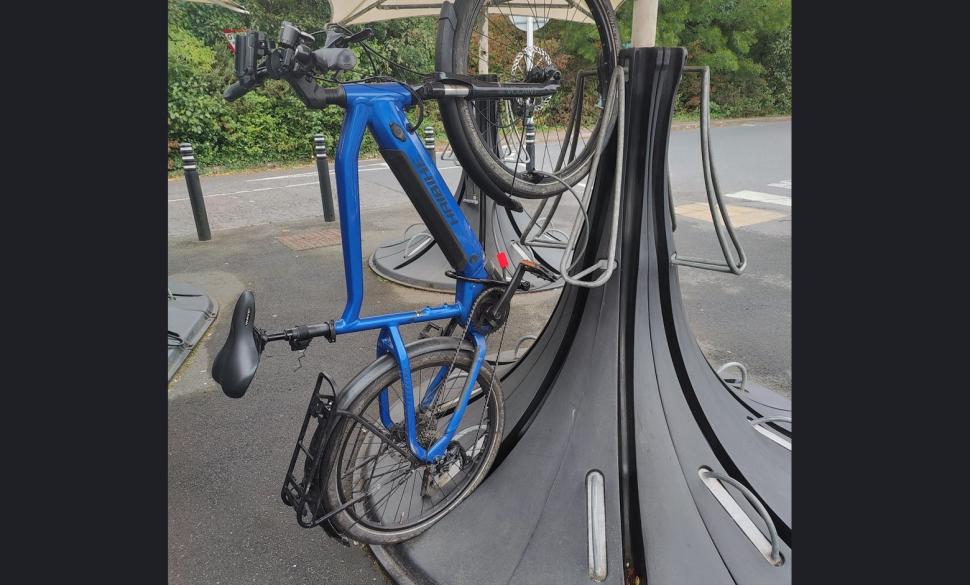 Sainsbury's bike parking stand, Alder Hills, Dorset (Ade Chapmanlaw)
Sainsbury's bike parking stand, Alder Hills, Dorset (Ade Chapmanlaw) 17 September 2024, 11:36
“Hey Sainsbury’s, what kind of hell is this?” Supermarket unveils latest daft cycle parking idea
Another fine example of the convoluted, inconvenient, and often downright weird approach to cycle parking displayed by supermarkets across the UK, this time courtesy of Sainsbury’s in Alder Hills, Dorset:
Oh dear...
“Hey Sainsbury’s, what kind of hell is this?” local councillor Ade Chapmanlaw posted on Twitter alongside the shop’s latest experimental take on cycle parking.
“Difficult to move the bike into, impossible to secure the bike to it safely. The only good thing is the shelter. Please replace with Sheffield stands as soon as possible.”
While Olympic-level strength and Luke Littler-style precision is necessary to park your bike to go shopping in Alder Hills, I suppose it’s better than no cycle storage at all, or having all the Sheffield Stands blocked by stacks and stacks of compost?
17 September 2024, 08:09

“Can we do something about the problem of dockless car parking?” Cycling campaigners blast calls to ban Lime bikes from councils “that have done nothing on active travel for years”, as locals say hire bikes should be “crushed” amid parking concerns
So, Lime Bikes are back in the news, it seems.
Last week, we reported that Muhammed Butt, the leader of Brent Council, appeared on BBC Radio 4’s Today programme to complain that the green hire bikes, and the American company’s dockless parking system, were causing a “nuisance” in the London borough, and were “just being dumped on the streets, parks, rivers and canals, outside the high streets”.
“They’re just sort of being left there with no care and attention. Lime do need to take some responsibility because it’s their users who are causing that nuisance,” Butt told Today presenter Amol Rajan.
However, the Labour-controlled council leader’s comments about “inconsiderately parked” and “abandoned” Lime bikes – rather inevitably – invited a few of Brent’s residents to post videos on social media of the borough’s pavements being blocked and used as a dump by a lot more than green e-bikes:
The next video on my way to work this morning in Brent NW10. #Brent pic.twitter.com/EKTsqMZUkH
— DJ Johnny London (@DJJohnn85206525) September 12, 2024
Nevertheless, Butt has doubled down on his criticism of Lime’s hire scheme, issuing an ultimatum this week that all 750 of the US-based operator’s bikes in the borough will be removed by 31 October unless requests for improved safety measures are acted upon.
As part of their ultimatum, Brent Council is calling for the introduction of dedicated Lime Bike parking bays and ‘no parking zones’ (which the local authority says would align with Transport for London’s planned e-mobility contract for 2026 and are already applied in 10 other London boroughs), resources for the council to removed abandoned bikes, and for Lime to increase the £10 in-app fine for users who fail to park their bikes correctly, neatly to the side of the footpath or in a parking bay.
“Lime bikes left scattered across our streets are causing havoc for other road users, especially for pedestrians and disabled people,” Butt said in a very pun-heavy statement yesterday.
“Residents have gone sour on Lime, and the council is receiving repeated, regular complaints about the bikes left across paths and roads in a haphazard way.
“This is putting unsustainable pressure on council staff who are spending time cleaning up after Lime. Something needs to change as the current situation is unsustainable and leaves a bitter taste in the mouth.
“To date, Lime has not satisfied our proposals, which we consider vital to ensuring the safe and efficient operation of the scheme in Brent. Unless Lime changes the way it works with us, we are out of road for its activities in Brent.”
> Is a common contract for London e-bike and e-scooter share schemes on the way?
Butt’s Halloween deadline for Lime has appeared to have been welcomed by some Brent residents, with 86-year-old Pat telling the Guardian that she wants the ubiquitous green bikes “rounded up and crushed”.
Life’s bad enough when you’re getting older and you’re not very steady on your feet without these bikes in your way. Good riddance,” she said.
“People just dump them with no consideration. People don’t think of other people,” added florist Heidi.
Meanwhile, Lime user Jude was also ambivalent about the scheme’s overall impact on the local community, telling the newspaper: “It’s convenient having them on the pavement but it’s a health and safety thing. In the morning they’re pretty much everywhere.”
> Lime hire scheme under fire as residents claim e-bikes "deliberately" left in "dangerous places"
However, cycling campaigners in the capital have been scathingly critical of Butt’s attack on Lime Bikes – which they believe comes from a council that has done little to make cycling easier in the borough.
“Dockless cycle hire is opening up cycling to more and more diverse Londoners,” the London Cycling Campaign said in response to Butt’s statement.
“Councils that have done nothing on active travel for years shouldn’t ‘ban’ bikes, but work with operators who offer funding for appropriately-placed parking.”
“Dockless cycling is an integral part of moving away from an overly car reliant transport system in the suburbs,” added Tom Houston on Twitter.
“The short sightedness of this man’s position is ridiculous.”
“They’ve given me so much independence, especially seeing as TfL don’t have the money/will to expand the docked cycle hire scheme,” added Chris.
Meanwhile, Kate argued that, if Lime parking bays are to become mandatory in Brent, “we should make sure that this parking replaces car parking – not pedestrian and parklet space”.
“Can we do something about the problem of dockless car parking?” asked Chris, who wasn’t alone in questioning the discrepancy between attitudes towards car and cycle parking, illegal or otherwise.
“Southside shopping centre in Wandsworth, has car parking capacity for well over 2,000 cars. There are probably bike hoops for approximately 40 bikes. And there are complaints that bikes are left on the pavement,” said Matt.
Echoing the LCC’s stance, another user said: “The lack of infrastructure to make cycling safer is noticeable in Brent, along with generally very poor driving standards.”
> Lime contractor tracked seized e-bikes to council lock-up and took them back
Responding to Brent Council’s ultimatum, a Lime spokesperson said that the company wants to work with the local authority to address its concerns.
“We are proud to have worked with our partner councils over the last six years to build a safe and reliable shared e-bike service across London,” the spokesperson said. “Local residents in Brent and across the capital use our bikes for essential journeys every day, with 11.5 million commuting trips already taken this year.
“We recognise that a small proportion of e-bikes are obstructing pavements and busy junctions, creating difficulties for those with access needs, and we understand the importance of keeping our pavements safe for all,” Lime told The Independent.
Lime also said that, due to Brent Council currently having just 10 pilot e-bike parking locations across the borough, it is “not possible to enforce mandatory parking rules”.
17 September 2024, 15:36

Brad’s back on his bike! Wiggins says he’s “a little bit nervous” as he gets ready to cycle for the first time “in nearly three years” during 50-mile meet and greet ride
After almost three years off the bike Sir Bradley Wiggins admits he’s a “little bit nervous”, as the 2012 Tour de France winner prepares to dust off his cycling shoes for a meet and greet 50-mile ride at the end of the month.
Last December, Wiggins revealed in an interview for a BBC documentary series on imposter syndrome that he had given up riding his bike “because I don’t like the person I became when I was on it”.
However, in an Instagram message posted last night, the five-time Olympic gold medallist announced that he will be taking part in a 50-mile leisure ride through Staffordshire on 29 September.
The ‘Ride with Wiggins’ event, organised by cycle shop Pau, will start and finish at Stafford’s Sandon Hall, and offers two route options (one which provides some off-road sections for gravel lovers) while giving fans of all things British cycling in the early 2010s the opportunity to ride with Britain’s first male Tour winner, as well as Wiggo’s former Sky teammate and Tour of Ireland winner Russ Downing.
“And don’t worry, you won’t be fighting to keep up with the Tour de France champ,” the organisers say.” Bradley Wiggins will be taking it easy and working his way around the group for a chat and to share a bit of banter along the way.”
Which is a caveat 44-year-old Wiggins – with three years’ worth of cobwebs to blow away – will no doubt have welcomed, as he admitted in a video promoting the event that he’s feeling the nerves ahead of his first batch of miles for quite a while.
“I’m getting back on my bicycle again,” he said in the video. “There are going to be some other stars there, Russell Downing is riding.
“So it’ll be good – the first time in nearly three years for me getting back on a bike, and I’m looking forward to it.
“Little bit nervous whether I’ll get round the whole thing. I think I will, I’m in pretty good shape at the moment. I'm looking forward to it. I hope to see as many of you there as possible.”
The leisure ride through Staffordshire marks another step in Wiggins’ tentative return to the cycling world, after a turbulent year marked by financial troubles, and follows in the wake of his much-discussed guest star role on Lance Armstrong’s The Move podcast and his appearance at this month’s Tour of Britain, supporting his 19-year-old son Ben.
Back in December, Wiggins opened up about his decision to quit cycling for leisure three years ago as part of ‘Imposter Syndrome’, a six-part BBC documentary series that also delved into his complex and often bitter relationship with his father, track cyclist Garry and his decision to craft a public persona to deal with the increased fame and pressure that followed his remarkable 2012 season.
“I don’t ride a bike anymore because I don’t like the person I became when I was on it,” Wiggins told Rob Adcock during the revealing interview.
“I can’t imagine achieving anything like that now in a sports perspective because I’m not the same person I was. I’ve grown now. I have all the answers. That all stems from my sporting career and greatness stems from an oddness about me which wasn’t resolved from childhood.
“I was the most confident bike rider when I was on it. But step off the bike and I had to step back as Bradley Wiggins, because the bike was where I was most comfortable and gave me all my confidence in my life.”
17 September 2024, 15:57
Could Oxford Street become the next Grimsby?
17 September 2024, 08:53
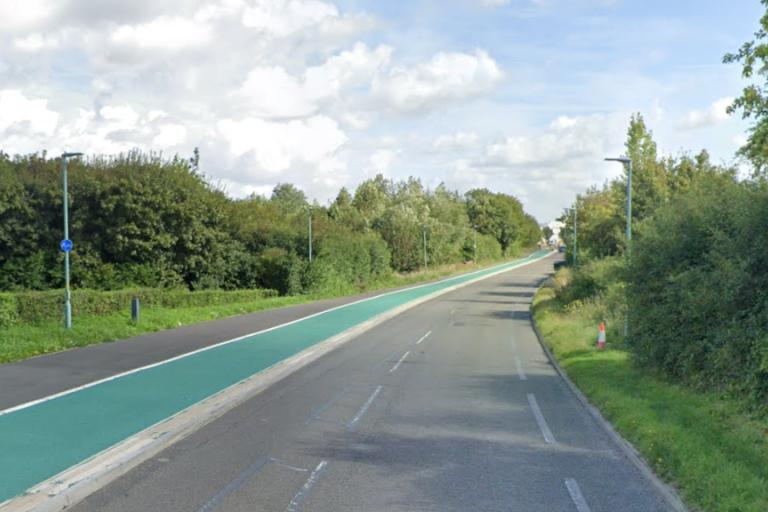
“I was amazed to be informed that there was an event to celebrate the completion of the cycle path, mainly because it has not been completed!” Council postpones planned bike lane party as infra’s “abysmal” rollout and “premature self-celebration” slammed
Over the years on the live blog, we’ve seen plenty of local authorities pat themselves on the back and wax lyrical over cycling and active travel infrastructure that is, to put it mildly, below the standards you might expect.
However, we rarely see councils organise parties to celebrate the opening of a bike lane that hasn’t even been finished yet.
But that’s the bizarre situation that has unfolded in Churchdown, where Gloucestershire County Council had arranged for an event – complete with light refreshments, we’re told – to mark the completion of the latest stretch of the Gloucestershire Cycle Spine (you remember, the ambitious 26-mile-long infrastructure project that will provide traffic-free links across the county – but which was also the subject of “unfounded” and “completely untrue” rumours that it was too wide and had made the B4063 too narrow for vehicles to pass. Yes, that one).
However, with persistent problems marring the scheme’s construction in recent months, the planned celebration, organised to coincide with Cycle September, was postponed at the last minute, ostensibly due to the weather having the potential to delay resurfacing works.
The debacle prompted Churchdown’s Lib Dem councillor Ben Evans to question why the event was even arranged when it was clear the cycle path wouldn’t be completed in time, and called on the council to focus on “more important” safety issues concerning the scheme.
“I must say I was amazed to be informed that there was an event to celebrate the completion of the cycle path, mainly because it has not been completed! It seems a strange thing to do,” Evans told Gloucestershire Live.
“As a representative for the people of Churchdown, I am also not sure whether they would agree the abysmal implementation deserves to have money spent ‘celebrating’ whilst people are still waiting to have the promised parking and safety measures installed. I think we will all just be relieved when it’s over.”
Meanwhile, Evans’ Lib Dem colleague Stewart Dove was also critical of this case of “premature self-congratulation”, adding: “Everyone agrees improving cycling and walking routes is a good thing. Myself and the whole team of local councillors are still receiving concerns, however, about the safety of the route in places, such as where the cycle route intersects with bus stops. I think ironing out those issues should take precedence over premature self-congratulation.”
However, a spokesperson for Gloucestershire County Council said: “Due to the weather forecast which has the potential to delay the resurfacing scheme in the area we have taken the decision to postpone this event.
“It had been arranged to link with Cycle September and encourage more people to get on their bikes and take advantage of the cycle spine that we are building through the county. We will be rescheduling this event for a later date.”
You know what, I was also thinking of celebrating the completion of today’s live blog… Oh wait, it’s still 10am. Drat.
17 September 2024, 14:57
‘Nah mate, we don’t want our lovely pulley cages anywhere near your heap of scrap SL7…’
> AbsoluteBlack will only let you buy its “extraordinary” titanium oversized pulley cage if your bike is good enough
Think I’ll stick with my very ordinary, very normal sized pulley cage, thank you very much.
17 September 2024, 14:39
Cyclists complete 390-mile ride from Paris to Suffolk to raise more than £200,000 in memory of rugby team killed in plane crash 50 years ago
With long-distance rides all the rage at the moment, a group of 60 rugby-loving cyclists spent last week cycling the 628km (or 390 miles) from Paris to Suffolk, in a memory of a team that was tragically killed in a plane crash 50 years ago.
18 members of Bury St Edmunds rugby club died when a Turkish Airlines flight crashed in Ermenonville, just outside of Paris, on 3 March 1974, killing all 346 people on board. The club’s members were returning from a Five Nations back between France and England when they were killed.
To mark the anniversary of the tragedy, 60 cyclists took part in a six-day ride from the French capital back to Bury St Edmunds, raising over £200,000 for St Nicholas Hospice Care and to build a new all-weather rugby pitch in the process.
“The whole experience was totally amazing,” Austin Cornish, whose father Laurie was killed in the plane crash, and who helped organise the memorial ride, told the BBC.
“We had some pretty awful weather, we had some long days on the saddle and day three was 97 miles (156km). It was six days of tough cycling. Unfortunately they managed to put us through cobbled streets – not very pleasant when you’re on a bike.”
Reflecting on the reasons for the ride, Austin – who was three when his father was killed – said: “It’s just an amazing adventure. We did it for them, and I look on at it as a bit of a return journey that they didn’t have, so it’s very special.”
17 September 2024, 13:55

“Great for crosswinds”: RAF (not that one) release air-filled cycling backpack to “reduce drag and enhance safety”… and cyclists aren’t convinced
Have you ever been out riding your bike thought to yourself, ‘You know what would improve my commute or weekend spin? If it looked like I was about to take off down the side of a mountain’?
Well, you’re in luck. Because Hong Kong-based innovators Ram Air Fairing (so not that RAF, though it does look like something they would design) will soon be launching a crowdfunding campaign for its ‘Pioneering Bike Backpack’ – a backpack that isn’t, well, a backpack in the traditional sense (because it doesn’t hold anything), but is instead designed to “significantly reduce air drag” and help you “effortlessly slice through the wind”, while enhancing your safety with integrated airbag protection.
And making you look like the airbag has already gone off or you’re about to go paragliding, of course. Or that you’re just a bit of a wally who’ll buy any old thing for the apparent aero gains.
> An air-filled cycling backpack to “reduce drag and enhance safety” is about to hit Kickstarter
And judging by the comments already on social media, it’s fair to say a lot of cyclists have responded to RAF’s aero backpack by reaching for their calendars, just to make sure.
“No. Just no,” said road.cc reader Aidan.
Hawkinspeter was more optimistic, however, writing: “Finally a perfectly shaped backpack for when I go shopping for fine China and then want to visit the house of cards building championship. Maybe I’ll go visit the domino toppling exhibition as well. Do you think they’d make a custom painted one that might look a little bit like a squirrel tail?”
“Just come back from a ride in a mahoosive cross wind. That should work,” said Peter. Now that would an echelon I’d like to see.
“I’d be prepared to bet a whole five quid that I never, ever see this in use. And that actually makes me feel slightly sad,” added another Twitter user.
Me too, to be fair.
“Yep, expect to see Visma rolling these out next Tour – in yellow, to complement their pointy hats from last season. Most likely helium-filled for all those mountain stages,” said one person who’s obviously head of development on a WorldTour team.
Don’t give them any ideas though!
And finally, BBB has won the afternoon with this comedy club cracker: “All those product claims are just hot air.”
Wahey!
17 September 2024, 13:18
“Do you want me to stop cycling and drive instead?” Why don’t cyclists use the cycle path? Because there are barriers everywhere
Another day, another set of questionably placed barriers obstructing a cycle path.
This time it’s Glasgow City Council’s turn to respond to construction work by failing to remember that not all people on bikes can nimbly duck and dive through a set of barriers like Mathieu van der Poel.
“I get it, Glasgow City Council, you want me to stop cycling and drive instead?” Tom Quinn, who posted the photos of the cyclocross-esque barrier position, said.
“These barriers are obscene and not anywhere close to following guidance. If I wasn’t physically able to lift my cargo bike I wouldn’t get around this.”
“They were moveable for a while, but last week they were filled with water I think, so they weigh a tonne,” added Keith Fuller. “A few days ago I went through there and there were four sections of this crap.
“I have zero idea why this was put in place, and it’s done nothing but make people angry.”
“I think it’s the contractors at fault but still unacceptable they are still there,” said another Glaswegian cyclist. “I am unable to book our logistics partner unless these are moved.
“This is a car-brained illogical response to a problem that doesn’t exist.”
Now, where have we heard that before?
17 September 2024, 12:35
Machete-wielding men on electric motorbikes attack teenage cyclist, chasing him into “busy” Tesco in attempted bikejacking
A teenage cyclist was attacked by two men wielding a machete and equipped with electric motorbikes in an attempted bikejacking in Liverpool, with the 16-year-old forced to rush into a Tesco to evade the muggers.
Read more: > Machete-wielding men on electric motorbikes attack teenage cyclist, chasing him into “busy” Tesco in attempted bikejacking
17 September 2024, 11:59
Huge watermelon slices and chilling in paddling pools… I thought they said this whole cycling around Australia thing would be hard work?
Oh yeah, I forgot about the 500km a day…
17 September 2024, 11:28

Traders protest Lime Bike parking bays in Oxford, as cycle hire company reportedly starts operating in city “without permission” from council
Lime Bikes really are the flavour of the week, aren’t they? Or maybe not so much…
While down in London, Brent Council – where the green e-bikes have been a fixture for five years – has issued an ultimatum to the American hire bike company, calling on it to address its pavement blocking problem otherwise the local authority will scrap the scheme by Halloween, Lime’s arrival in Oxford this month hasn’t gone down too well with local traders.
When contractors for Lime rocked up to Frideswide Square in the city at the start of September, to paint lines for a new parking bay for the bikes on the pavement, a group of business owners staged a makeshift protest to prevent them from carrying out their job (damned if you arrange parking spaces, damned if you don’t eh?).
“People from Lime came along and started to paint white lines outside Lula’s restaurant but we stood in front of them with our arms folded until they went away,” Amanda Suliman-Bell, who runs Rainbow and Spoon boutique, told the Oxford Mail, while claiming that the shop owners in Frideswide Square were not consulted about the new parking pays.
Lime did, however, succeed in setting up a bay for its bikes outside the nearby West Oxford Community Centre on Botley Road.
But the Oxford Mail has reported that Lime may have decided to begin installing their parking bays without being given the go-ahead by Oxfordshire County Council.
“At the moment, local authorities have limited control over operators installing rental e-bikes,” a council spokesperson said.
“Oxfordshire County Council is currently in discussion with Lime with a view to establishing an agreed code of conduct for their operations in Oxford.”
The Oxford Mail also reported that one Lime Bike has already been found abandoned and on its side outside St Frideswide Church. Probably could do with installing more handy parking bays then, eh?
17 September 2024, 10:42
NIMBYs doing NIMBY things, #589
17 September 2024, 09:57

Ineos Grenadiers road captain Luke Rowe rumoured to be set for DS role at Decathlon-AG2R, after admitting things “haven’t been going well for a long time” at British team
In one of the more surprising developments of the cycling season so far, Ineos Grenadiers’ long-standing road captain Luke Rowe is reportedly ready to step into the Decathlon AG2R La Mondiale for 2025.
Rowe – a cornerstone of some of Ineos and Sky’s biggest victories over the years, including five Tour de France wins – is set to retire at the end of the year, despite having a contract with the British team until the end of 2025, after a shocking run of injuries and ill-fortune.
The 34-year-old hasn’t raced since a race-ending crash at the E3 Saxo Bank Classic in March, where he suffered a concussion that ruled him out of the spring classics and this year’s grand tours, while a projected farewell ride at the Tour of Britain was also called off, meaning Rowe is unlikely to race as a pro again.
With his tactical nous as one of the peloton’s most acclaimed and respected domestiques, Rowe has long been touted as a future sports director, and was widely tipped to stay on in a management capacity at Ineos, where he has spent the entirety of his 13-year pro career.
(Zac Williams/SWPix.com)
However, in a twist worthy of M. Night Shyamalan, it has been reported by Daniel Benson that Rowe is instead set to join Decathlon AG2R La Mondiale as a sports director, a move that is yet unconfirmed but could be announced in the next few weeks.
Though the rumoured appointment may come as something of a surprise, especially considering Rowe’s position as Mr Ineos over the past decade, it will nevertheless act as another statement of intent for the ambitious French outfit.
Since the arrival of Decathlon as title sponsor at the start of this year, the team have enjoyed a fruitful 2024 so far, winning 30 races, including two stages at the Giro d’Italia, and a stage, second-place overall, and a long spell in the red leader’s jersey at the Vuelta a España courtesy of Ben O’Connor.
(A.S.O./Pauline Ballet)
Rowe’s departure would also prove a blow for an Ineos management structure which has been in flux since Dave Brailsford stepped aside to focus on another sporting giant in transition, with recent years marked by Rod Ellingworth’s exit amid reported internal tensions, DS Steve Cumming’s ongoing absence at races since June, and Dan Bigham’s recent defection to Red Bull-Bora-Hansgrohe.
And earlier this month, Rowe himself admitted that the British team is currently “far away from the podium” when it comes to cycling’s biggest races.
“You can’t justify it. It’s a team with a huge budget. Riders are paid to win big races. That’s just not happening now. We’re not performing. Not that one person is failing, but it hasn’t been going well for a long time,” he told Eurosport during the Vuelta.
“Staying at the top was difficult, we were chased. Now, we have to chase the rest. Several teams have passed us. I know the people at the top of the team, and they will start thinking and not give up. But it’s not solved in one or two years. I give them a few years, then Ineos will return to the top.”
17 September 2024, 09:44
While we’re on the subject of e-bikes…
After obtaining a PhD, lecturing, and hosting a history podcast at Queen’s University Belfast, Ryan joined road.cc in December 2021 and since then has kept the site’s readers and listeners informed and enthralled (well at least occasionally) on news, the live blog, and the road.cc Podcast. After boarding a wrong bus at the world championships and ruining a good pair of jeans at the cyclocross, he now serves as road.cc’s senior news writer. Before his foray into cycling journalism, he wallowed in the equally pitiless world of academia, where he wrote a book about Victorian politics and droned on about cycling and bikes to classes of bored students (while taking every chance he could get to talk about cycling in print or on the radio). He can be found riding his bike very slowly around the narrow, scenic country lanes of Co. Down.
Latest Comments
- Hirsute 1 sec ago
But what is the small print for mileage, state of the vehicle after 2 years? Lots of potential extra costs....
- Rekrab 16 min 31 sec ago
MORE LANES, MORE LANES!!!!
- Simon E 23 min 11 sec ago
The numbers don't tell anything like the whole story....
- Simon E 54 min 17 sec ago
Just squirt some thick grease all over his side windows and door panels. If you're feeling really uncharitable you could throw some sand at the...
- David9694 1 hour 34 min ago
check under 'W'for "What cars do to people"
- quiff 2 hours 14 min ago
Fascinating - I have always thought Hersheys has a whiff of vomit about it!
- Global Nomad 2 hours 15 min ago
good to see you're testing the farsports wheels - hope to see road.cc continue to expand the range of brands it considers. These or the shallower...
- chrisonabike 2 hours 18 min ago
Duly triggered! (At least "it's comedy!" though)....
- chrisotherwise 2 hours 49 min ago
Sadly very normal. And the sand contains loads of evil little shards of flint.
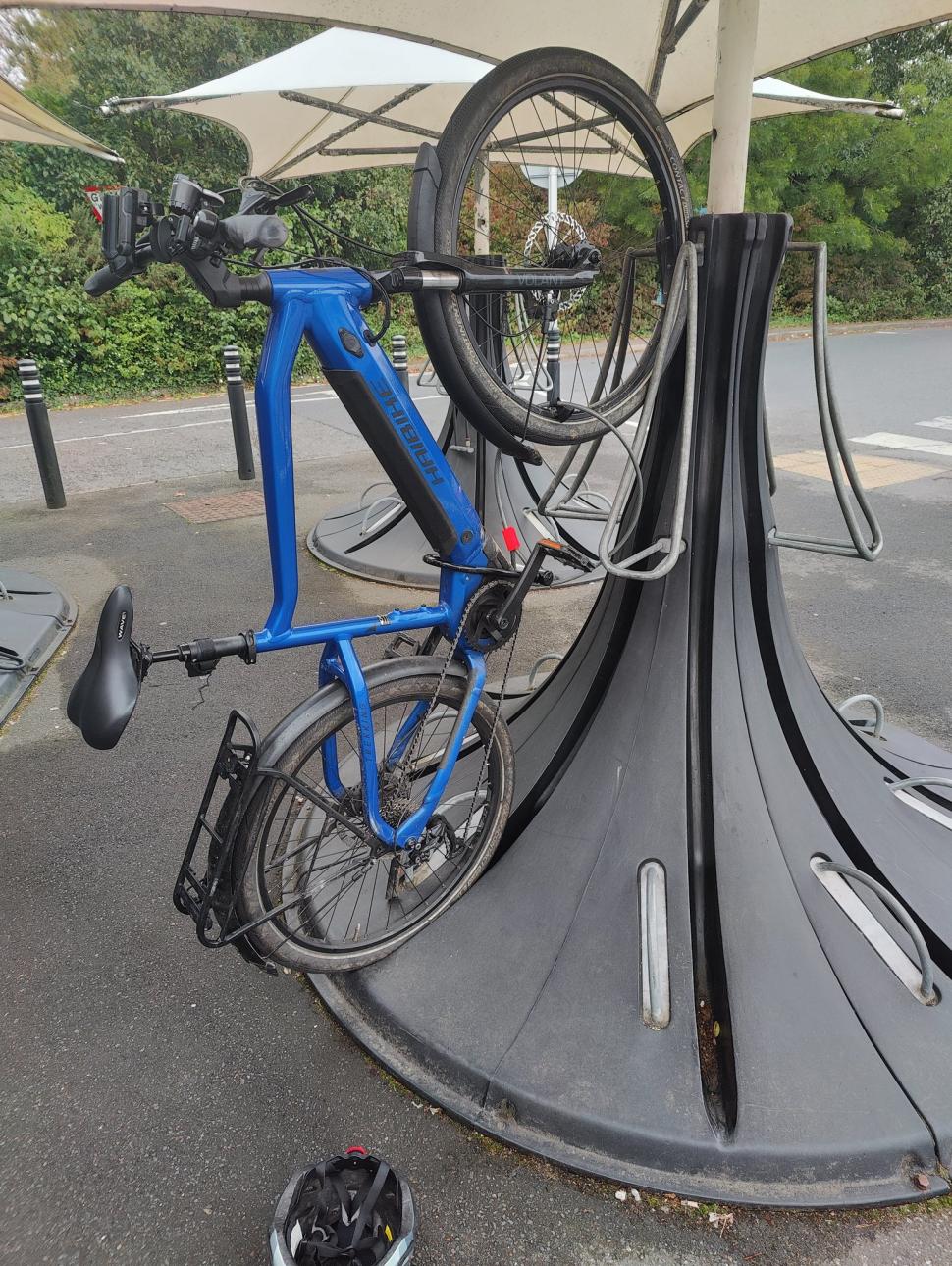
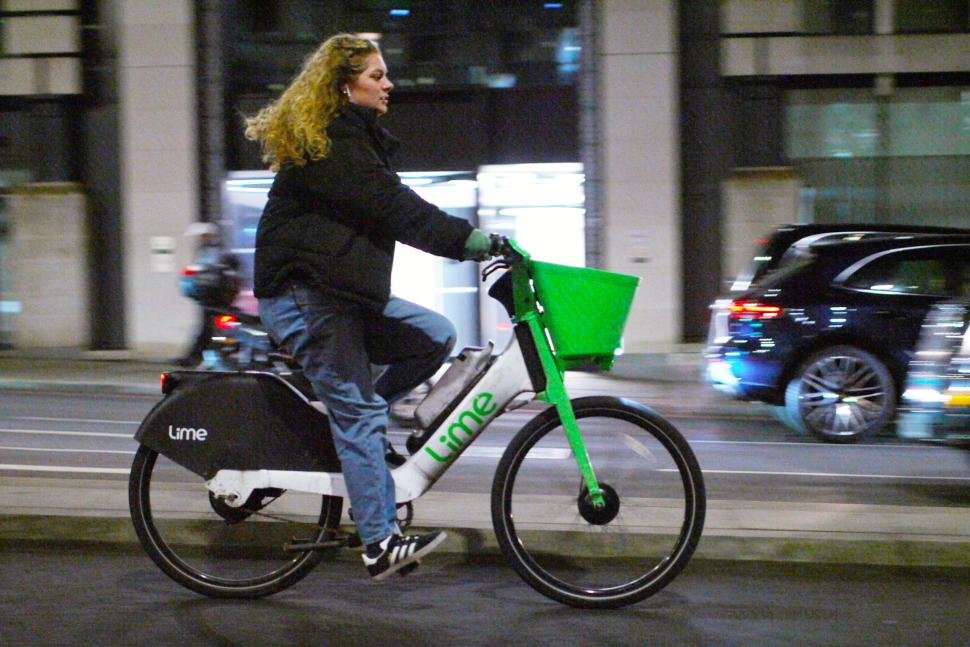
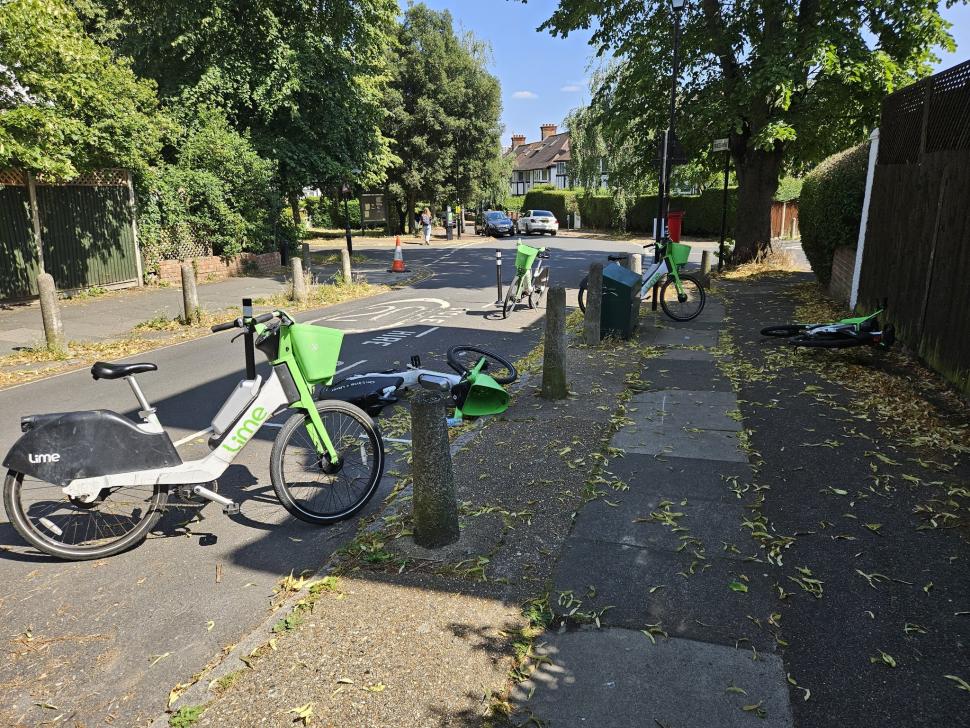
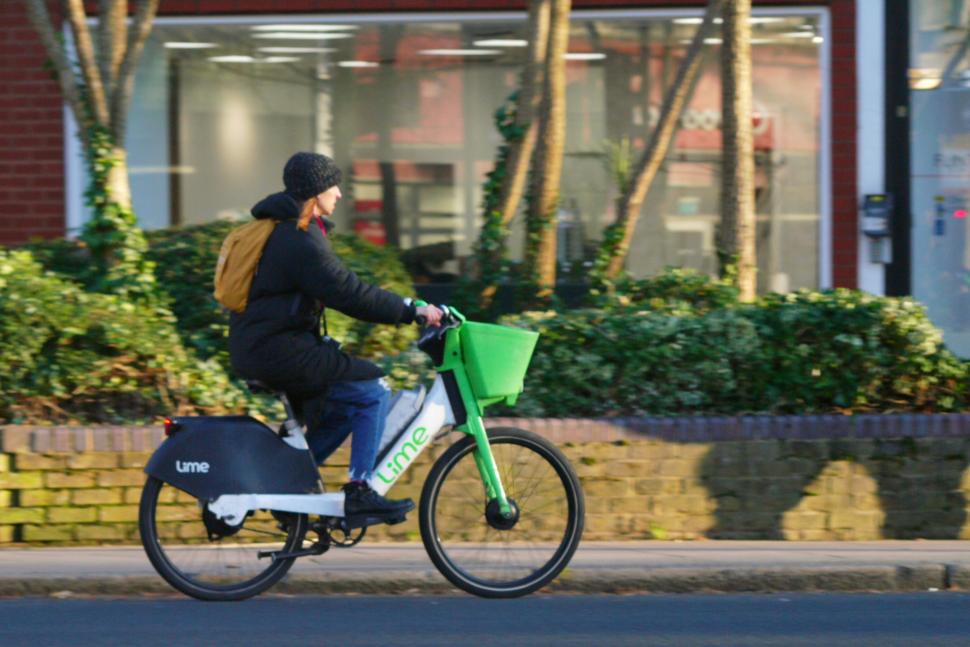
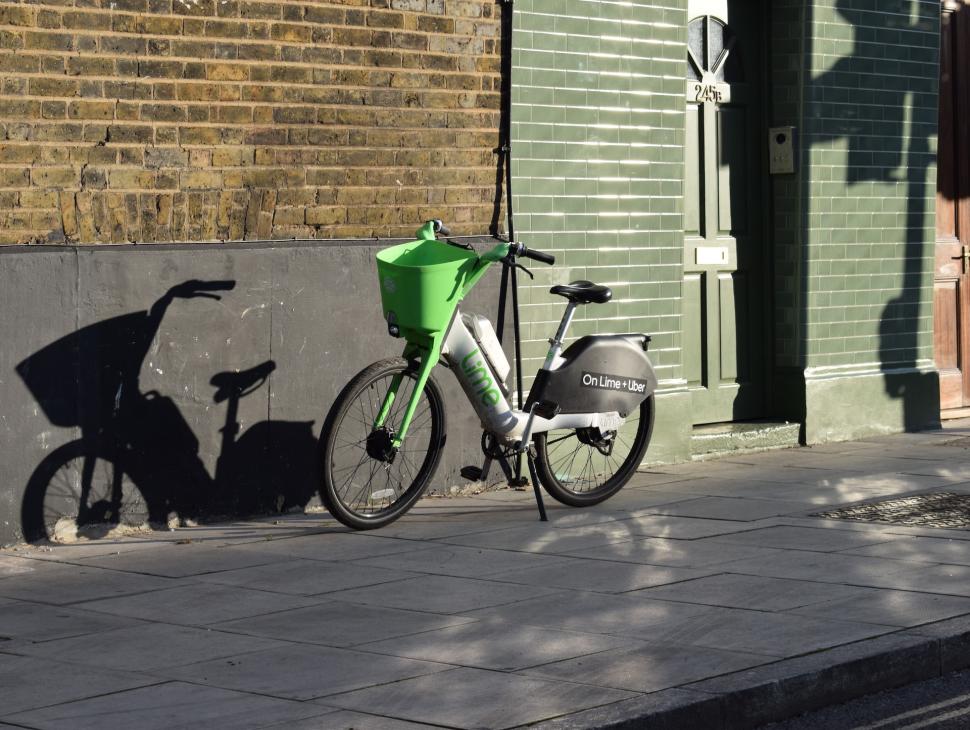


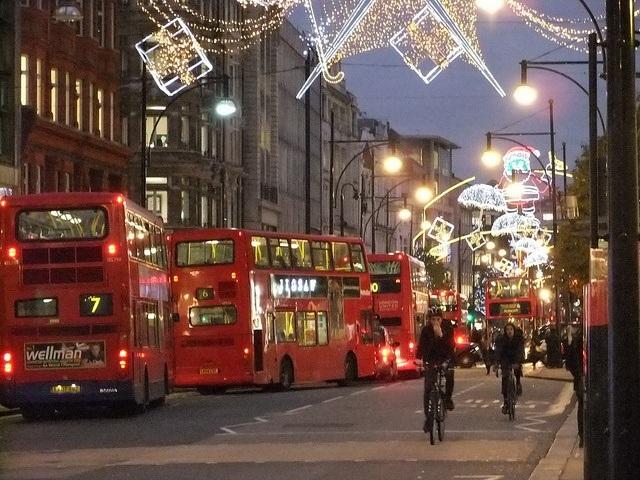
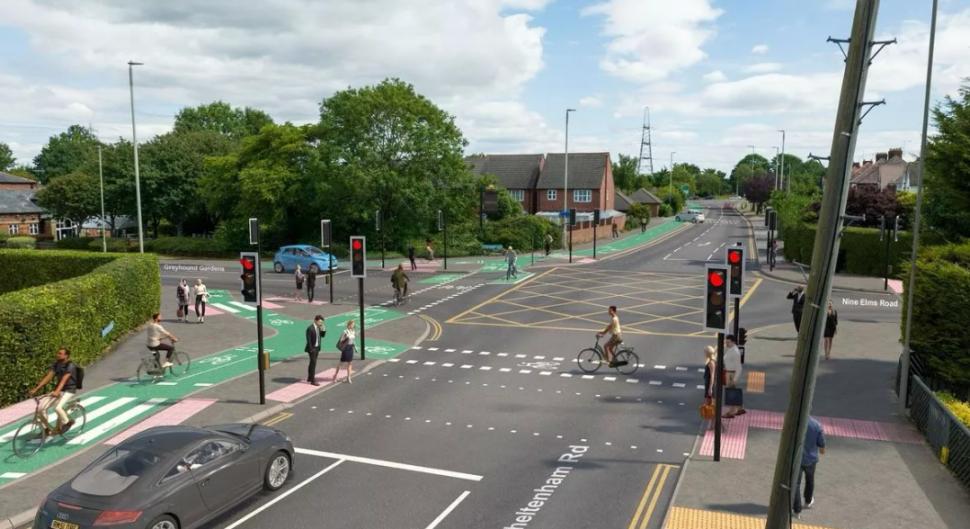




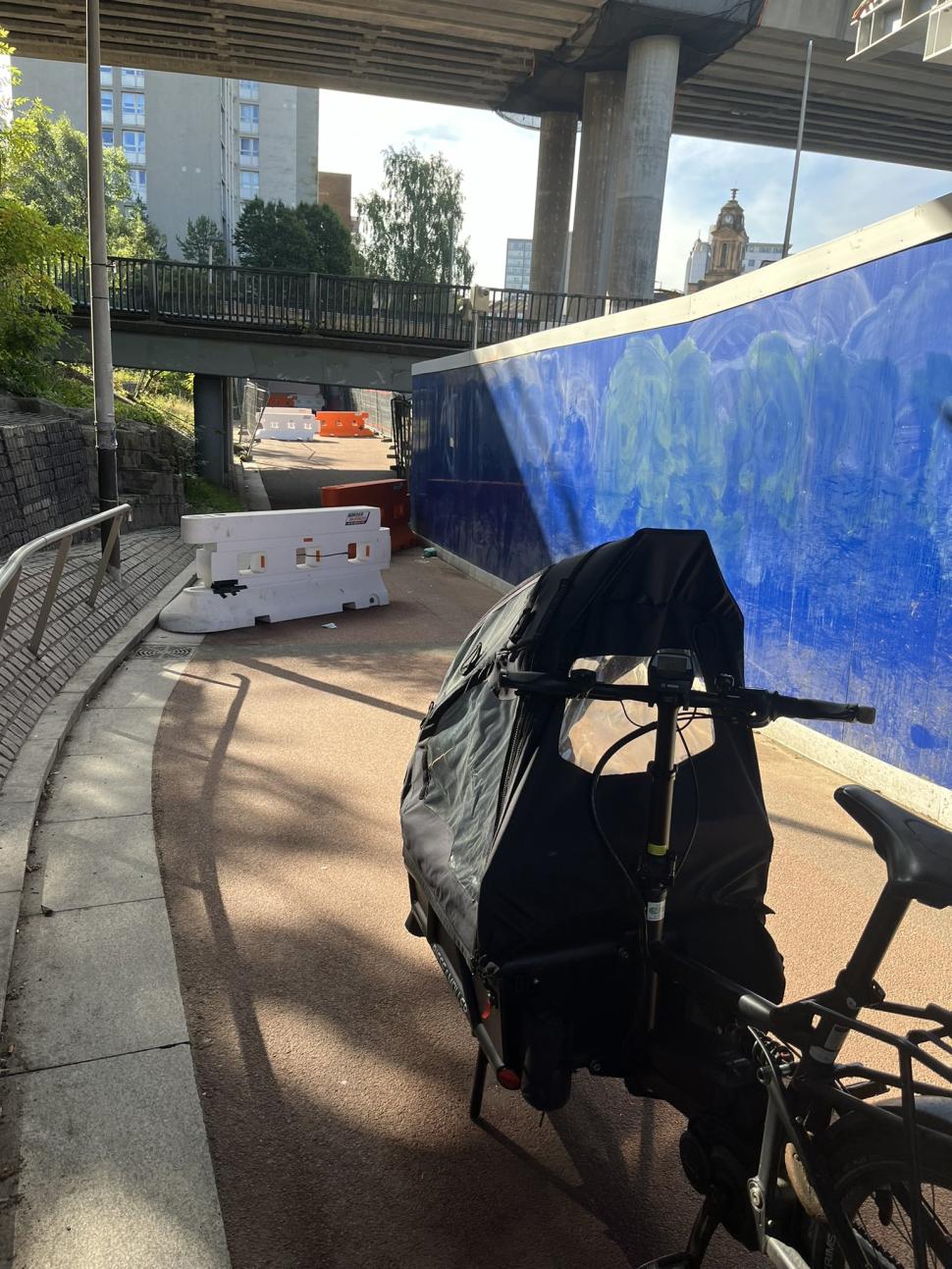
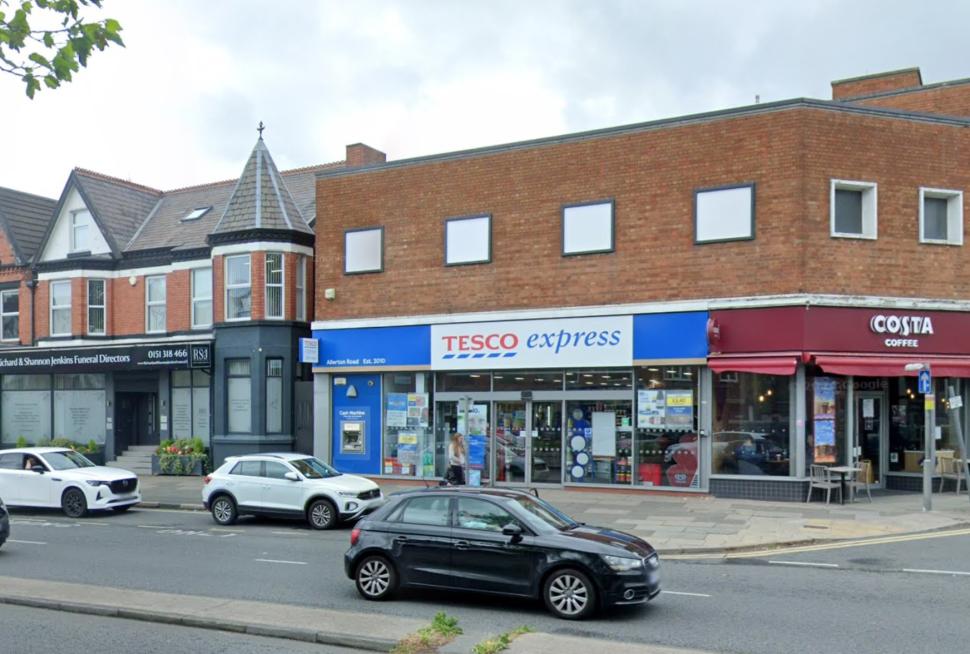
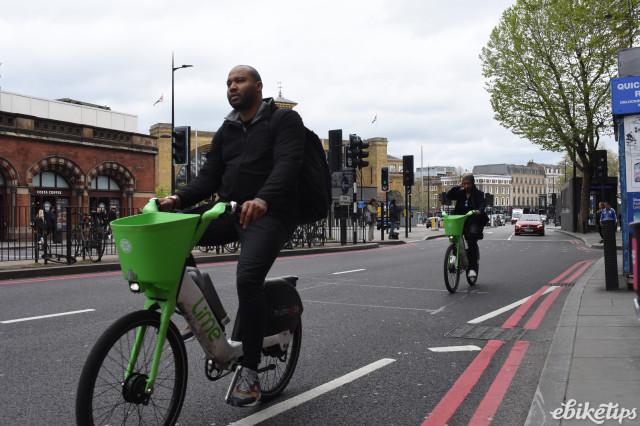
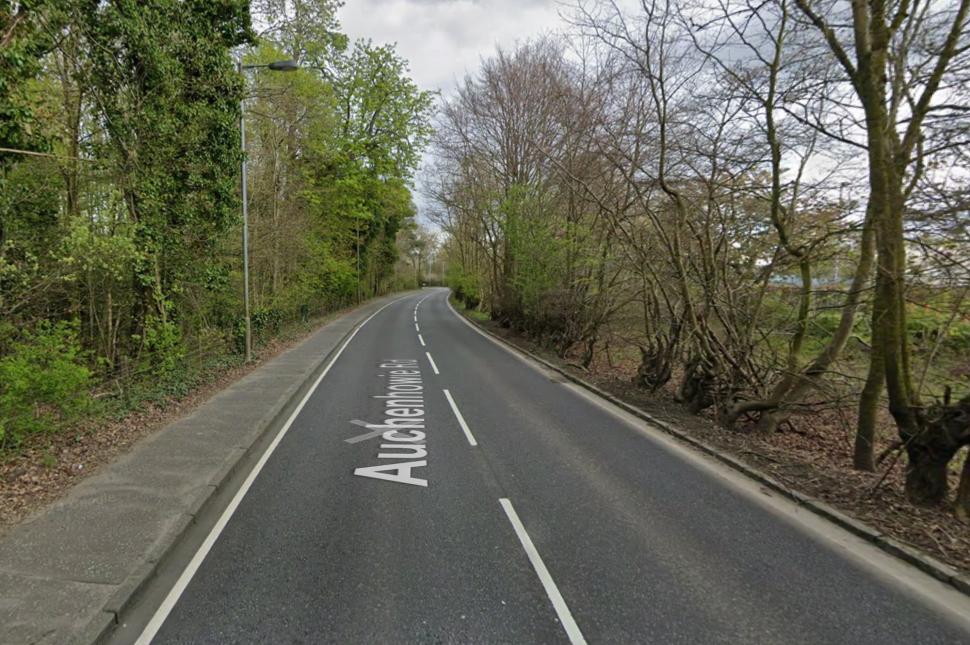


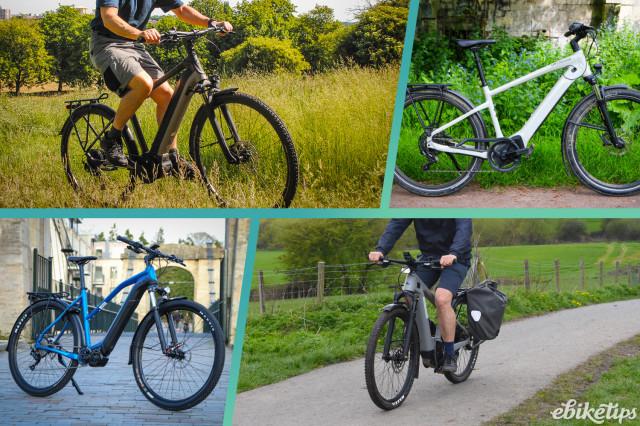
Add new comment
66 comments
A cordless drill is your friend here…
What is wrong with bike parking designers?
Not everyone has the required upper mobility and strength to lift their bike up into an unnatural position just to please the designer. Also, a supermarket is a likely place for people to want to use cargo-bikes and panniers etc. so how about providing cycle parking that can actually fit non-standard bikes?
I don't even understand who pays these "designers" - they must work very cheaply (probably a few packs of edible crayons). The design of a Sheffield stand (with a tapping bar) has yet to be improved upon.
I would argue that in some cases, sheffield stands with slide out racks above is a valid alternative (i.e. two level racks with bottom level being sheffield stands).
On the basis that I am capable of lifting my bike onto a slide out rack and securing it to that (given a properly designed lock point, which somehow isn't guaranteed?!?), squeezing more bikes into a given footprint, while leaving sheffield stands for those who can't lift bikes into racks/have non standard bikes that don't fit.
Of course the supermarket racks in article:
1. Won't take any bike with full mudguards
2. Can't be locked through frame + rack with a d-lock
3. Probably fail on some bikes just on tyre width (and I suspect this goes both ways - too thick and it won't go into slot. To thin and the bike will fall off the rack without being tied down...)
4. Require rider can actually lift bike (See 93 year old meeting club ride at cafe with relatively heavy e-bike this weekend - I would query if they can get the bike into that rack)
It seems strange to heavily optimise the space that bike racks take up (to the point of making them not usable for quite a few cyclists) when so much space is given over purely to parking cars. It'd make more sense to have double-decker car parking as that would save a lot more space and cars are more or less the same size and shape.
The problem with providing both Sheffield stands and abomination stands is that a lot of people would just choose to use the Sheffield stands if they're available as they're easy to use and very effective. That would then mean that the double-decker only-fits-standard-bikes parking would be left until last to be used, so it wouldn't necessarily help the people with e.g. wide tyres if they arrive too late.
Just provide Sheffield stands - they don't really take up that much space and the other "bike" parking solutions are just marketing gimmicks for people that don't actually know about bikes or trikes.
For now, in most-of the UK? Fair.
BUT I hope we'll need to get more efficient before I retire... https://bicycledutch.wordpress.com/2018/06/26/two-bicycles-per-second/
After a bit of digging, I found out those strange contraptions are called "Cyclepods" and the designers won a £10,000 prize from well-known cycle-friendly global mega-corp, Shell. (https://newatlas.com/cyclepods-build-a-better-bikerack/5849/)
More details on the Cyclepods website, including a glowing endorsement from the London Cycling Campaign (for a different product!)
https://www.cyclepods.co.uk/cyclepods/
You can buy a lot of crayons for £10,000!
It always seems like a stupid idea to have bike parking that aims to "capture" a wheel with some kind of slot as they need to take into account that bikes have a lot of variation with the width of tyres. Most of the time, MTBs won't fit into them and certainly fatbikes won't. Also, by trapping just the very outside of the wheel and not supporting the rest of the bike, they're essentially transforming the bike into a rim-snapping lever.
The other stupid idea is thinking that bikes take up less space if they're lifted upright. I mean, yes that can work with some bikes and reasonably able-bodied cyclists, but it discriminates against people with heavy bikes and/or upper body mobility issues (e.g. frozen shoulder which can affect almost anyone). It also causes issues with mudguards and luggage racks.
And, these monstrosities don't work with trikes or tandems as far as I know.
I'd like to see these designers put their wonderful, prize-winning designs into practice for car parks. What we need is two grooves that the wheels have to slot into (make them so they only fit some vehicles) and a sharply inclined ramp that the drivers have to accelerate into to get the front up into the air and then quickly slam on the handbrake to prevent the vehicle sliding down again. I'd like to laugh at the drivers struggling to get out of their car whilst being suspended a few feet into the air.
I also noticed that the cyclepods are too ashamed to list their price, whereas you can just buy Sheffield stands (with tapping bar please) for less than £100: https://www.vsafety.co.uk/Site-Security/Cycle-Storage/Cycle-Stands/Sheffield-Cycle-Stands-With-Tapping-Bars
Edit: Whilst I'm ranting, I noticed that the cyclepods can have umbrella-like things attached to the top. Great idea for preventing vertical rain from getting your wheels wet, but not so good for protecting the saddles that stick further out (and the one part of your bike that you'd most like to keep dry) and not much use if there's a wind blowing.
Agree that the humble Sheffield stand is preferable to all manner of odd alternatives. But I still dislike the potential for frame-on-stand contact, and my bike's paint being at the mercy of whoever parks on the other side of the stand.
You could always wrap a bit of cardboard or protective material over your frame or the bike stand. That's what makes Sheffield stands good - they provide flexibility as bike owners typically know their preferred way to lock their bike up, rather than being forced to comply to some clueless designer's fevered ideas.
Agreed. TBH I rarely leave mine outside so it's only an occasional problem / only a problem because it's occasional. If I was doing it regularly, I might be using a different bike anyway, or it would be easy to take protective measures - e.g. inner tube or pipe insulation wrapped around the top tube.
I like the idea of pipe insulation wrapped around the Sheffield stands - they should come like that as standard.
Then they just need to plumb them in - Sheffield stand radiators. Keep all those delicate machines cosy in winter, the grease doesn't freeze *, and there's nothing nicer than returing to your bike and getting on to a warm saddle **.
* Obviously we'd only doing this in places regularly subject to very low temperatures, like Haymarket station cycle stands.
** Not at the moment of course because that probably means that something terrible has happened in your absense.
Heating the stands won't work so well if they're wrapped in pipe insulation. What we need is roof mounted infrared heat lamps or something.
Something I've never figured out is why train stations are always much colder than anywhere else?
Hmm... maybe not every bike deserves the mark1a bicycle-hotel treatment.
Agree that for the UK the message should probably be "just put in Sheffield stands (since there are so many ways people manage to screw a very simple idea up). Ideally with the extra bar (makes it twice the effort to cut). Which are securely fixed in place (Edinburgh Tram failed there). Spaced so you can easily park bikes by them (avoid toast rack designs, installing them with one end abutting a wall or otherwise providing insufficient space). Not placed where motor vehicles are obviously going to run into them (many UK placements - although those motor vehicles get all kinds of places).
Although it's miles easier getting your bike from a sea of Sheffield stands than an equivalent-capacity car park I think another good reason for e.g. double-height racks is to increase the "door to door" convenience factor. Increasing the parking density means you can have thousands of bikes parked in a space it doesn't take you five minutes to navigate. That leaves more space for the much less densely-packing "non-standard bikes" e.g. trikes, bakfietsen, other adapted cycles (even recumbents or velomobiles for oddballs).
Interestingly - several of the parking garages in Amsterdam don't seem to have good provision for this though (see NotJustBikes on the subject).
The reason why I think tapping bars are so useful is that it prevents thieves from unbolting one of the legs and then sliding the lock under the leg. They more or less force the thieves to cut through the stand which then makes it obvious that the stand is not to be used, whereas if thieves loosen the fixing bolts, then it might not be clear to people that the stand has been tampered with.
I do think we should actually already be adding double-height racks at least at railway stations / transport hubs.
Pros and cons:
Most bikes - even in the UK - are roughly the same shape.
Several of the rack designs I've tried are actually quite easy to use, even the upper racks. They can be made so when down they rest on the ground and you can effectively roll your bike up them over the rear wheel holder instead of having to lift. (Here is a not-so-good example - you have to lift part of the bike into the air). There should be a spring / gas piston so you get some assistance with lifting them back up again.
OTOH there are certainly poor designs! Usual UK standardisation (not) - Edinburgh Haymarket station ones are pretty good while the Edinburgh Waverley ones have several issues and some "anti-features".
Dutch style: someone using one here, or here (again - the latter design could be slightly easier by having a lower rear-tyre holder).
A difference between NL and UK is that many bikes in NL come with built-in ring locks (just like you don't have to buy a separate lock for your car). That makes parking and locking them very simple. For various reasons in the UK we want to lock bikes to things. Making rack designs which facilitate that for a range of bikes is perhaps a little more tricky (not impossible though).
Larger tyre sizes? Yeah, because "cool" (I'm guessing?) and "ebike" there are now increasingly "SUV bikes" with e.g. fat bike tyres around. Perhaps we should not be falling over ourselves to cater for what are effectively "city off-road vehicles" though.
So my final thought would be "mostly Sheffield stands, and at stations double height racks but with a number of Sheffields for less-standard machines". Of course ideally with staffing - mainly to discourage theft / for "social safety" but also to discourage "tragedy of the commons" where people who just don't fancy using the double-height racks monopolise all the Sheffields and then someone can't park their trike...
Someone round our way's got the first of those covered - by yarn-bombing them.
At least the Sainsbury's cycle parking pimple is a step-up from something like this; https://startsafety.uk/products/economy-bike-rack
These cowboys even have the cheek to say "all you need to do is choose where to put it, and bolt it down if you choose to do so."
Their website invites people to leave reviews ...
In some respects, I prefer that design to the cyclepods as they're not pretending to be something they're not. They suffer from being wheel-bending devices and are much too easy to pick up, but at least they're nice and cheap.
Well, nearish. Not exacly quite as handy for the station or the bus rank though.
Seems to me there would be plenty of space for parking bikes on the opposite side, outside the Said Business School. I wonder* why they didn't choose to put it there.
[* I don't really wonder.]
What the actual F- is that???
If there wasn't a bike attached to it I'm not sure I'd realise what it was.
On BBC Breakfast this morning they did a piece, including an interview with someone from Cycling UK, about a police crackdown on dangerous e-bike riders/the (usually illegaly-modified) bikes.
I can't remember if it was just for London or nationwide.
But I can't find anything about it on the BBC news website, nor generally online.
It was to counter all those "bicycles are fantastic" stories that the BBC has been running. Balance, don't you know.
If you are in the UK, and have a TV Licence you can go to IPlayer and it starts at about 1h 16m.
https://www.bbc.co.uk/iplayer/episode/m00231b7/breakfast-17092024
Don't seem to be able to clip it
https://github.com/get-iplayer/get_iplayer
Brent and Butt have history; from the Brent Cyclists website:
"Ahead of the Cabinet Council meeting on Monday 17 January, we wrote to Cllr Butt to express our extreme frustration at the entire process of how many of the active travel trials, especially the Healthy Neighbourhood schemes, have been conducted. Let’s not forget that the pop-up cycle lane was removed abruptly before the end of the consultation for dubious reasons like removing the wands for cleaning. They never made it back. We never had a report or a recommendation on that."
"As council leader, Cllr Butt bears ultimate responsibility for their failure, as well as a total failure to implement adopted Brent Council policies and follow guidance from the Department for Transport (DfT) and Transport for London (TfL)."
"Brent Council keeps stating their commitment, while at the same time weakening or removing active travel trial schemes." (19/01/2022)
https://www.brentcyclists.org.uk/2022/01/18/open-letter-to-cllr-muhammed...
Butt is just another bike-hating, car-loving petrolhead. I wonder why the BBC, that bastion of unbiased fairness and balance, didn't interview anyone from Brent Cyclists?
I'm not sure this is really Lime Bikes' problem - as I see it the real problem is the explosion of selfish cock Wimbledon in society - some of whom also use Lime bikes.
On my daily commute it's almost exclusively the Lime / e-scooter riders that blast through the red lights on the cycle lane and at pedestrian crossings.
I'd put good money on these same selfish idiots tossing their fast food wrappers wherever they like, talking during the film at the cinema, spitting etc etc.
In London there's been a dramatic decline in personal responsibility - but it's not Lime bikes' fault any more than it's Vw's or Ford's fault when their cars are parked on the pavement.
Lime bikes issues - another symptom of a transport system in transition from motor vehicle dependency. London has recognised there is an issue (lack of efficient street-level transport / not enough flexibility in that). But they've not got to the "best class" solutions yet because they are "expensive" and or "disruptive" / controversial - so "how can we fill the gap - oh, these cycle hire companies say they are happy to help..."
London may have some particular issues through being a huge collection of merged towns and historic "organic" development. But in general I agree with the author of the NotJustBikes channel - when you see hire bikes (and particularly dockless ones) touted as a "solution" what was really wanted was an improved at-street-level public transit system and better support for high-capacity flexible private transport (cycling).
Bike share systems are all "costs" to operate (even if this is actually paid for via and advertising deal). And the vandalism / damage / loss which comes with "just leave it anywhere" (and sometimes the financial models behind it) ultimately ends up costing the public.
Look at how the places with the most cycling and arguably nicest streets do it:
NL - there is a nationwide bike rental scheme but it is "fixed location" and tied into public transport hubs so the bikes are less likely to be dumped. (Ultimately NL works because it's really easy to obtain, store, park and use your own bike).
Copenhagen - bit of a mix here but with a main rental purveyor with "parking zones"
Seville (still in transition) - they do have a city-wide rental system but I believe it's based on fixed locations.
Not sure I entirely agree with this analysis (though I certainly approve of the proposed improvements on their own terms). Maybe this is just me showing a lack of imagination for what an effective transit system could be, but I think dockless bikes fill a gap in the middle:
Sadly, I suspect dockless bikes have mainly taken modal share from public transport rather than private cars.
Pages